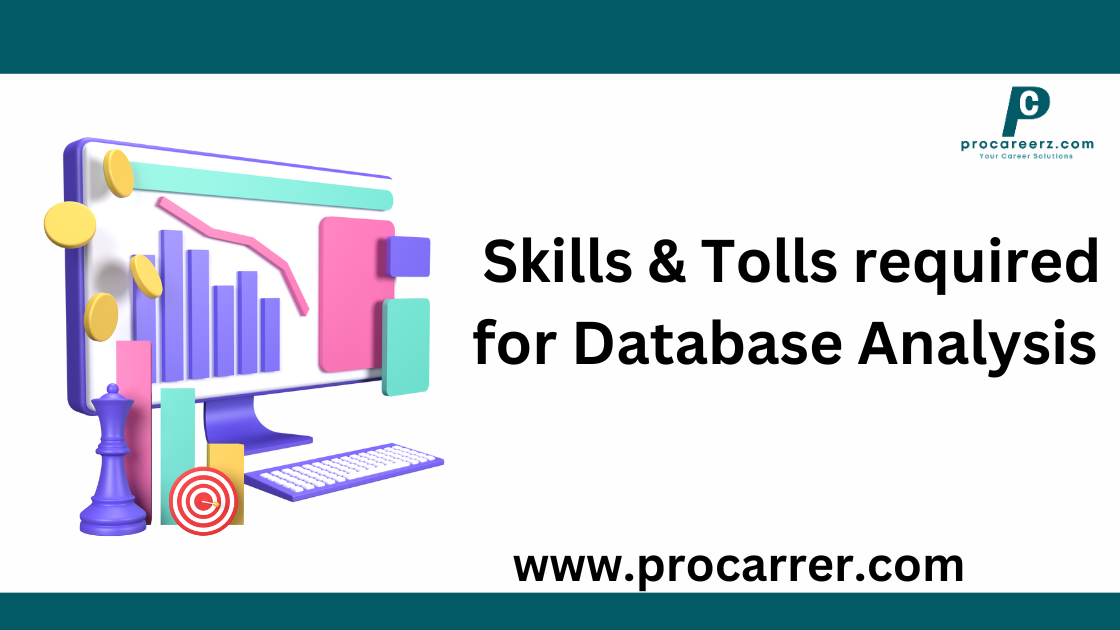In-database analytics is a technology that allows data processing to be conducted within the database by building analytic logic into the database itself. Doing so eliminates the time and effort required to transform data and move it back and forth between a database and a separate analytics application.
Skills need to learn for database analysis
SQL Database?
SQL databases have been used for decades — and they’re still in use today. In this blog, we give a basic overview of what a SQL database is and compare a few of the most commonly used ones: MariaDB, MySQL, and PostgreSQL (sometimes referred to as Postgres).
Python in database?
The Python programming language has powerful features for database programming. Python supports various databases like SQLite, MySQL, Oracle, Sybase, PostgreSQL, etc. Python also supports Data Definition Language (DDL), Data Manipulation Language (DML) and Data Query Statements.
Data visualization-
In our increasingly data-driven world, it’s more important than ever to have accessible ways to view and understand data. After all, the demand for data skills in employees is steadily increasing each year. Employees and business owners at every level need to have an understanding of data and of its impact.
Statistics-
Statistics simply are a form of dynamic metadata that assists the query optimizer in making better decisions. For example, if there are only a dozen rows in a table, then there’s no point going to an index to do a lookup; you will always be better off doing a full table scan.
Machine learning-
Machine learning is a method of data analysis that automates analytical model building. It is a branch of artificial intelligence based on the idea that systems can learn from data, identify patterns and make decisions with minimal human intervention.
THE TOOLS WE CAN USE ON DBA-
Machine learning is a method of data analysis that automates analytical model building. It is a branch of artificial intelligence based on the idea that systems can learn from data, identify patterns and make decisions with minimal human intervention.
MYSQL :-
- Scalability: MySQL is highly scalable and can handle large amounts of data with ease. It is designed to scale from small applications to large enterprise-level systems, making it an ideal choice for businesses of all sizes.
- Performance: MySQL is known for its excellent performance and fast data retrieval speed. It uses various optimization techniques such as caching and indexing to speed up data access and retrieval.
- Security: MySQL has strong security features that protect your data from unauthorized access. It supports SSL encryption, password authentication, and other security measures to ensure data confidentiality and integrity.
- Flexibility: MySQL is a flexible database management system that can be used with a wide range of programming languages and applications. It supports various storage engines, including InnoDB, MyISAM, and others, allowing you to choose the one that best suits your needs.
- Open-Source: MySQL is an open-source database management system, which means that it is free to use and modify. It has a large and active community of developers who contribute to its ongoing development and support.
SAS :-
SAS (Statistical Analysis System) is a software suite used for advanced analytics, business intelligence, data management, and predictive modeling. Here are three benefits of SAS:
- Wide Range of Functionality: SAS offers a wide range of functionality, making it a versatile tool for data analysis. It includes statistical analysis, data visualization, data mining, machine learning, forecasting, and more. This range of functionality makes it easier for analysts to perform complex analyses and obtain insights from data.
- Security: SAS is known for its robust security features, which are essential for organizations that handle sensitive or confidential data. It includes features such as data encryption, access controls, and secure data storage. SAS also provides compliance with industry-specific regulations such as HIPAA, GDPR, and SOX.
REDIS :-
Redis is an open-source, in-memory data structure store, used as a database, cache, and message broker. Some of the benefits of using Redis are:
- High Performance: Redis is an in-memory data store, which makes it extremely fast and efficient in handling data. Since it stores data in memory, it can deliver data with low latency, high throughput, and high availability. Redis also supports different data structures, such as strings, hashes, lists, sets, and sorted sets, which makes it a versatile solution for various use cases.
- Scalability: Redis is designed to scale horizontally, which means it can handle a large amount of data and traffic. Redis uses a master-slave replication model, where the master node is responsible for writes, and the slave nodes are responsible for reads. This model makes Redis highly available and fault-tolerant.
RAPIIDMINER :-
RapidMiner is a data science platform that allows users to easily perform various data analysis tasks such as data preparation, machine learning, and predictive modeling. It provides a user-friendly graphical interface that enables users to perform these tasks without requiring any programming knowledge.
The platform offers a wide range of features, including data integration, data cleansing, visualization, and predictive analytics. Users can easily import data from a variety of sources, including spreadsheets, databases, and cloud-based services, and then use RapidMiner’s tools to clean, transform, and analyze that data.
RapidMiner also includes a number of pre-built machine learning models and algorithms that users can use to develop predictive models. These models can then be deployed and integrated into other applications or workflows.
